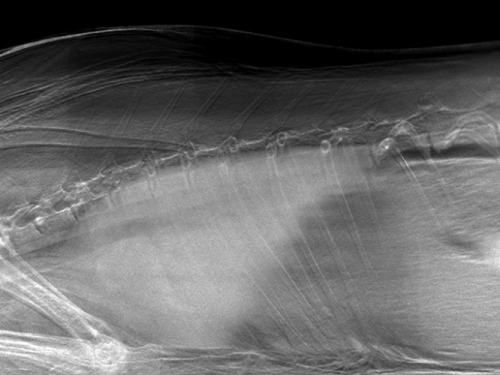A team led by Etta Pisano has developed a new x-ray machine that captures higher-quality images and emits less radiation.
Conventional x-rays create shadow pictures, Pisano says. An x-ray machine beams tiny particles called photons at a patient. Most of the photons bounce off, but some are absorbed and travel through the patient to create an image.
Pisano’s machine uses the photons that bounce off instead of the ones that are absorbed. “If you don’t need to absorb photons, you can make an image at a much lower dose of radiation,” she says.
Low-radiation technology has been around for decades, but the machines that used it were far too large and expensive for hospitals. Pisano’s innovation was to pack the same technology into a smaller machine. Her team, which includes researchers at the Brookhaven National Laboratory, first tested their machine on breast cancer in tissue from cadavers. They soon found that the machine was capable of producing high-quality images of any part of the body.
Pisano’s next step is to have a team of engineers build another machine that can be sold to hospitals. Right now she is raising capital to fund the project, and she anticipates that they will produce an FDA-approved machine in two years. “Once we get this product out on the market,” she says, “it will replace conventional x-ray imaging.”
Meagen Voss received a master’s degree in neurobiology in spring 2010.
Etta Pisano is vice dean of the School of Medicine, director of the Biomedical Research Imaging Center, and a professor of radiology and biomedical engineering at UNC. Funding for this project came from the National Institutes of Health. The Office of Technology Development (OTD) is the only UNC-Chapel Hill office authorized to execute license agreements with companies. For more information, contact OTD at (919) 966-3929 or visit http://research.unc.edu/otd/.


